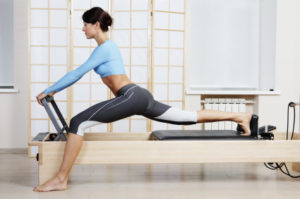Pilates as a form of exercise has exploded in terms of popularity over the years. As such everyone has tried to jump on the Pilates bandwagon and many ‘re-inventions’ of true Pilates have taken place. Much of what is being done currently is nothing more than Aerobics without getting your heart rate up!!
Pilates has been around for a long time, becoming popular in the dance community in America in the 1920’s. True Pilates is very much a mind body exercise, that when taught correctly, aims to focus on precise, efficient and well controlled movement of various parts of the body, often together. Pilates also places a big focus on appropriate breathing patterns throughout this movement.
becoming popular in the dance community in America in the 1920’s. True Pilates is very much a mind body exercise, that when taught correctly, aims to focus on precise, efficient and well controlled movement of various parts of the body, often together. Pilates also places a big focus on appropriate breathing patterns throughout this movement.
The terms ‘core muscles’ and ‘core strength’ are relative newcomers, gaining popularity in the common vernacular over the past 15-20 years. The idea that these muscles are the most important group of muscles in the body and that with all movement, we should all be tightening up has perhaps gotten a little overdone.
The ‘core muscles’ are simply part of the stabilising system of the lower trunk. We have stabilising as well as movement muscles throughout the body and while stability and good control of the trunk is important for efficient, controlled movement, strength and control throughout the various joints of the body is vital. Pilates was developed much before the ‘core’ became popular and while many of the exercises place load on and challenge the abdomen and lower trunk, this is only part of the focus.
So, is Pilates about muscle training and strength then? Again, Pilates is all about efficient and well controlled movement under load. Certainly, with certain exercises a baseline level of strength is required in order to perform the movement well, however much of how well controlled a movement is has more to do with how well the brian is able to use the strength it has than the out and out strength of the muscle per say.
A huge part of Pilates is actually brain training. Through practice of the movements, we aim to improve both the brains awareness of what the different regions of the body are doing as well as its ability to improve the neuromuscular control of these segments. True Pilates is a whole body exercise and should place much more focus on fine control than heavy abdominal loading. For this reason, the exercises should hurt your brain as much as your muscles! Without close supervision and correction, a Pilates class can be a waste of time or worse encourage you to develop poor movement patterns that may set you up for injury in the future.
Article by Jim Burke

